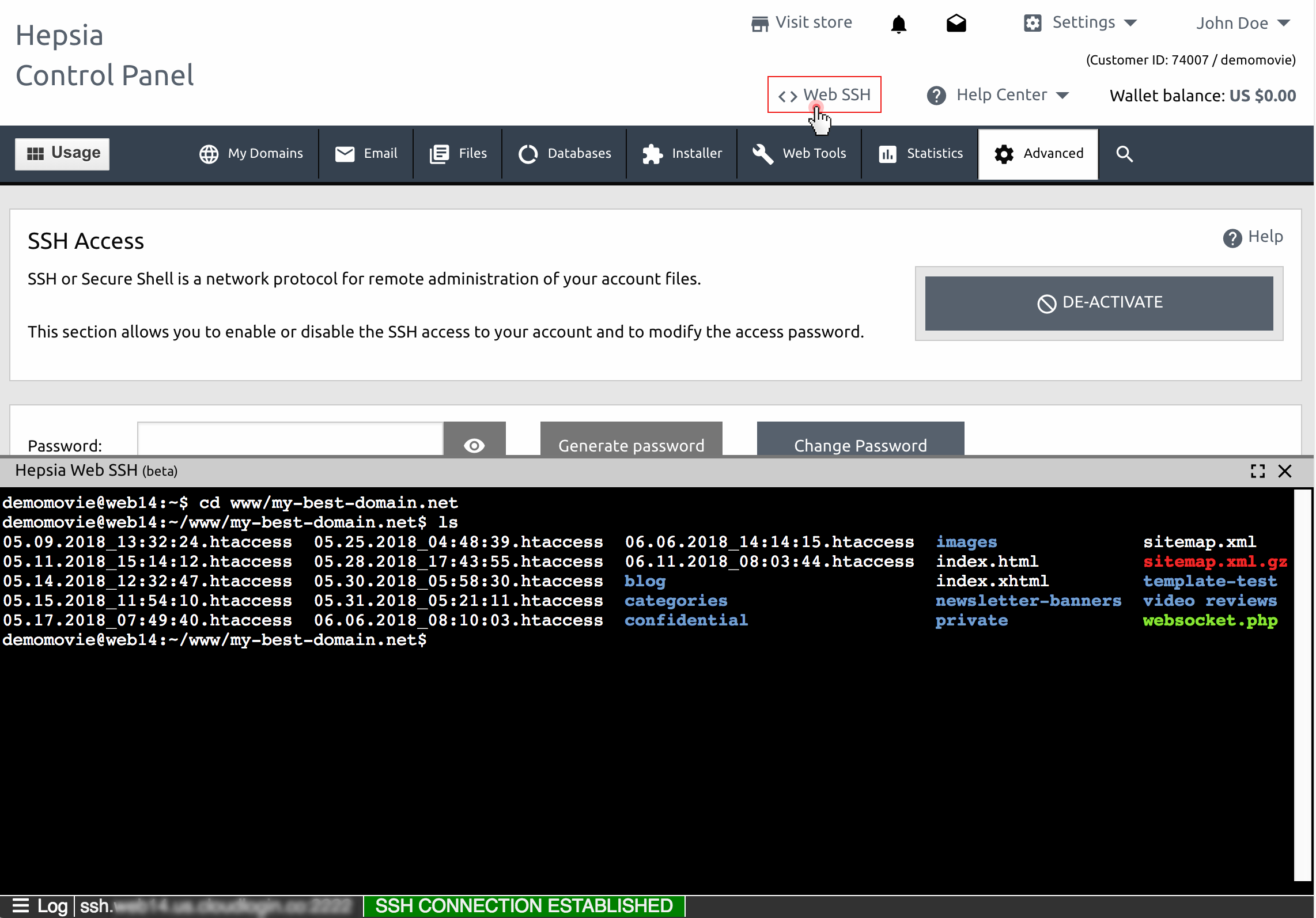Alright folks, let me tell you something that’s gonna blow your mind. Web based SSH is not just another buzzword in the tech world—it’s a game changer. Imagine being able to connect to your server securely, without having to install any bulky software on your system. Sounds too good to be true? Well, it’s absolutely real, and we’re diving deep into this topic today. So, buckle up, because we’re about to take you on an exciting journey through the world of web based SSH.
You might be wondering, why should I even care about web based SSH? Great question! In today’s fast-paced digital landscape, flexibility and accessibility are king. Whether you’re managing servers from the comfort of your home or troubleshooting issues while sipping coffee at a café, web based SSH offers unparalleled convenience. It’s like having a superpower in your pocket.
Now, before we dive headfirst into the nitty-gritty details, let’s set the stage. This article is your one-stop destination for everything related to web based SSH. We’ll cover the basics, explore its benefits, delve into some of the best tools available, and even touch on security concerns. By the end of this read, you’ll have all the knowledge you need to make informed decisions. So, let’s get started, shall we?
- Sam Milby And Catriona Gray A Closer Look At Their Lives Careers And Impact
- Angela Lansbury The Timeless Legend Of Stage And Screen
What Exactly is Web Based SSH?
Let’s start with the basics: SSH stands for Secure Shell, and it’s a protocol that allows you to securely connect to remote servers. Traditionally, you’d need a dedicated SSH client like PuTTY or OpenSSH to establish these connections. But here’s the twist—web based SSH takes this concept to the next level by enabling you to access your servers directly through a web browser. No downloads, no installations—just pure simplicity.
Web based SSH is particularly useful for developers, sysadmins, and anyone who needs quick and easy access to their servers. It’s like having a virtual toolbox that you can carry around wherever you go. And hey, who doesn’t love convenience?
Why Should You Care About Web Based SSH?
Listen up, because this is where things get interesting. There are several compelling reasons why web based SSH deserves a spot in your tech arsenal:
- Mastering Remote Iot Vpc Ssh Raspberry Pi Download Your Ultimate Guide
- Does Barron Trump Play The Guitar Exploring The Young Trumps Musical Talent
- Accessibility: With web based SSH, you can access your servers from any device with an internet connection. No need to lug around a laptop or worry about installing software.
- Security: Despite being web-based, these tools offer robust encryption and authentication mechanisms to ensure your data stays safe.
- Cost-Effective: Many web based SSH solutions are free or come with minimal costs, making them an attractive option for small businesses and individual users alike.
- Collaboration: Need to share access with a team member? Web based SSH makes it a breeze, allowing multiple users to connect and collaborate in real-time.
So, whether you’re a seasoned pro or just starting out, web based SSH has something to offer for everyone. Let’s move on to the next section and explore some of the top tools in this space.
The Best Web Based SSH Tools You Need to Know
Alright, now that we’ve established why web based SSH is such a big deal, let’s talk about some of the best tools you can use. Here’s a quick rundown:
1. CloudShell
CloudShell is a popular web based SSH tool that offers a seamless experience for managing cloud resources. With its intuitive interface and robust feature set, it’s a favorite among developers and IT professionals. One of the standout features of CloudShell is its ability to integrate with various cloud platforms, making it a versatile choice for multi-cloud environments.
2. Shellinabox
If you’re looking for a lightweight solution, Shellinabox is worth checking out. It’s open-source, easy to set up, and provides a no-frills approach to web based SSH. While it may lack some of the advanced features found in other tools, its simplicity makes it an excellent option for smaller projects.
3. Termius
Termius is another top contender in the web based SSH space. What sets it apart is its cross-platform compatibility, allowing you to access your servers from desktop and mobile devices alike. Plus, it comes packed with features like session management, multi-factor authentication, and customizable themes.
These are just a few examples of the many excellent tools available. The key is to choose the one that best fits your needs and workflow. Now, let’s shift gears and talk about some of the common use cases for web based SSH.
Common Use Cases for Web Based SSH
So, where exactly can you apply web based SSH in real-world scenarios? Let’s take a look:
- Remote Server Management: Whether you’re deploying applications, troubleshooting issues, or performing routine maintenance, web based SSH makes managing remote servers a breeze.
- Cloud Computing: As more businesses move to the cloud, the demand for secure and convenient access methods has skyrocketed. Web based SSH is the perfect solution for cloud-based environments.
- Collaborative Projects: Need to work with a team on a project? Web based SSH allows multiple users to access the same server simultaneously, streamlining the collaboration process.
These use cases barely scratch the surface of what’s possible with web based SSH. As technology continues to evolve, the possibilities are endless. But with great power comes great responsibility, so let’s talk about security next.
Security Considerations for Web Based SSH
Here’s the deal—while web based SSH offers numerous advantages, security should always be a top priority. After all, you’re dealing with sensitive data and systems. Here are a few tips to help you stay safe:
- Use Strong Authentication Methods: Enable multi-factor authentication (MFA) whenever possible to add an extra layer of protection.
- Keep Your Tools Updated: Regularly update your web based SSH tools to ensure you have the latest security patches and features.
- Monitor Access Logs: Keep an eye on who’s accessing your servers and when. This can help you quickly identify and respond to any suspicious activity.
By following these best practices, you can enjoy the benefits of web based SSH without compromising on security. Now, let’s wrap things up with some final thoughts.
Conclusion: Take Your Tech Game to the Next Level
Alright, we’ve covered a lot of ground today, and I hope you found this article informative and engaging. To recap, web based SSH is a powerful tool that offers unparalleled convenience and flexibility for managing remote servers. From its ease of use to its robust security features, it’s no wonder why so many people are adopting this technology.
So, what’s the next step? If you haven’t already, give web based SSH a try. Whether you’re using one of the tools we discussed or exploring other options, the key is to find what works best for you. And remember, stay vigilant when it comes to security—your data is precious!
Before you go, I’d love to hear your thoughts. Have you used web based SSH before? What’s your favorite tool? Drop a comment below and let’s keep the conversation going. Oh, and don’t forget to share this article with your friends and colleagues who might find it useful. Until next time, stay tech-savvy and keep leveling up!
Table of Contents
- Level Up Your Game with Web Based SSH: The Ultimate Guide for Tech Enthusiasts
- What Exactly is Web Based SSH?
- Why Should You Care About Web Based SSH?
- The Best Web Based SSH Tools You Need to Know
- Common Use Cases for Web Based SSH
- Security Considerations for Web Based SSH
- Conclusion: Take Your Tech Game to the Next Level
- Download Ssh Iot Device Anywhere Your Ultimate Guide
- Mastering Remoteiot Vpc Ssh On Raspberry Pi With Aws


